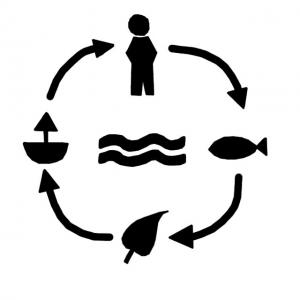Executive Summary
The SSWM Toolbox, which is available online at www.sswm.info, is an integrated tool for capacity development at the local level, linking up sustainable sanitation, water management and agriculture. The Toolbox is particularly useful as a planning tool for local planners and as an implementation and teaching tool for NGOs, CBOs etc. It is also used as a comprehensive pool of information for leaders and decision makers; a ready-made training tool for international organisations; or just as learning tool for individuals (e.g. private sector) or students. It is also a meta-tool to link people to other existing tools from partners and an exchange platform bringing together actors from the water, sanitation and agricultural sector.
The overall feedback regarding this initiative has been exclusively positive. Uses of the website has been increasing steadily (currently over 3000 per week) and the Toolbox has recently won the International Water Association’s (IWA’s) Project Innovation Award for capacity development.
The next phase of the Toolbox comprises amongst other further Training-of-Trainers in order to enable collaborating organisations to use the Toolbox for their own capacity development initiatives and the development of Specific Topic Entry Pages (STEPs). These are pages embedded within the Toolbox designed as information pools and training supports for specific topics or regions.
The SSWM Toolbox has been developed with the contribution of many different partners from the sustainable sanitation, water, hygiene and IWRM sector under the aegis of seecon international gmbh. The development was also made possible through an important financial contribution of SDC and conceptual feedback from SDC key persons.
STEPs are a unique opportunity to use the SSWM Toolbox with it various user groups from the private, NGO and public sector as a platform to strengthening the business development capacity within the water management and sustainable sanitation sector Therefore, cewas, the SSWM Toolbox partners seecon international gmbh and are currently preparing the compilation of a STEP focusing on the support of using a business approach for successful implementation of SSWM initiatives.
Goals of the STEP
- To strengthen small- and middle-scaled actors from the private sector in order to reply to the increased demand for effective SSWM measures in a technically, environmentally, institutional as well as socially and financially sustainable way.
- To support civil society groups (e.g. NGOs and CBOs) and public institutions (including utilities) involved in water management and sustainable sanitation to adopt a business approach in order to provide technically, environmentally, institutional as well as socially and financially sustainable services.
- Supporting the creation for an enabling environment on institutional and regulatory level for a sound business development in the sector.
Biogas Stove Design
This document was orginially presented for MSc Course on "Renewable Energy and the Environment” at the University of Reading. It present basic therotical principals for the technical design of biogas burners.
FULFORD, D. (1996): Biogas Stove Design. A short course. Kingdom Bioenergy Ltd.; University of Reading URL [Accessed: 28.05.2019]Toilets
The first part of a sanitation system is the „user interface“, i.e. the toilet, pedestal, pan or urinal. It is an important part of the sanitation system because this is the part the user comes in contact with. Acceptance of a sanitation system therefore often mainly depends on the acceptance of the user interface. This paper gives an overview on developments of different technologies for user interfaces (UDDTs and urinals). The contributions present developments in different geographical regions: South America, East Africa and the Eastern Europe, the Caucasus and Central Asia (EECCA) countries.
ECOSAN CLUB (2011): Toilets. (= Sustainable Sanitation Practice , 6 ). Vienna: Ecosan Club URLThe use of biomethane as a fuel by the urban bus fleet in Lille (France)
This presentation illustrates the case of Lille (France), where biogas produced from green waste biomass is used to run the urban bus fleet.
MESTREL, M. (2008): The use of biomethane as a fuel by the urban bus fleet in Lille (France). PPT Presentation.. Biogas ja Bioenergia 2008. [Accessed: 06.01.2011] PDF11 Tips for Using Flip Charts More Effectively
25 ways to conserve water in the home and yard
This website provides a lot of simple strategies for saving water in the home.
EARTH EASY (n.y): 25 ways to conserve water in the home and yard. Parksville: Earth easy URL [Accessed: 07.05.2010]Alternative Wastewater Treatment: Advanced Integrated Pond Systems
Article on this blog about the plant in St. Helena, California (designed by J.W. Oswald from the University of Berkley). The production of algae, which take up the large part of nutrients (N and P) from the wastewater during the treatment) and the reuse as fertilizer is also suggested.

